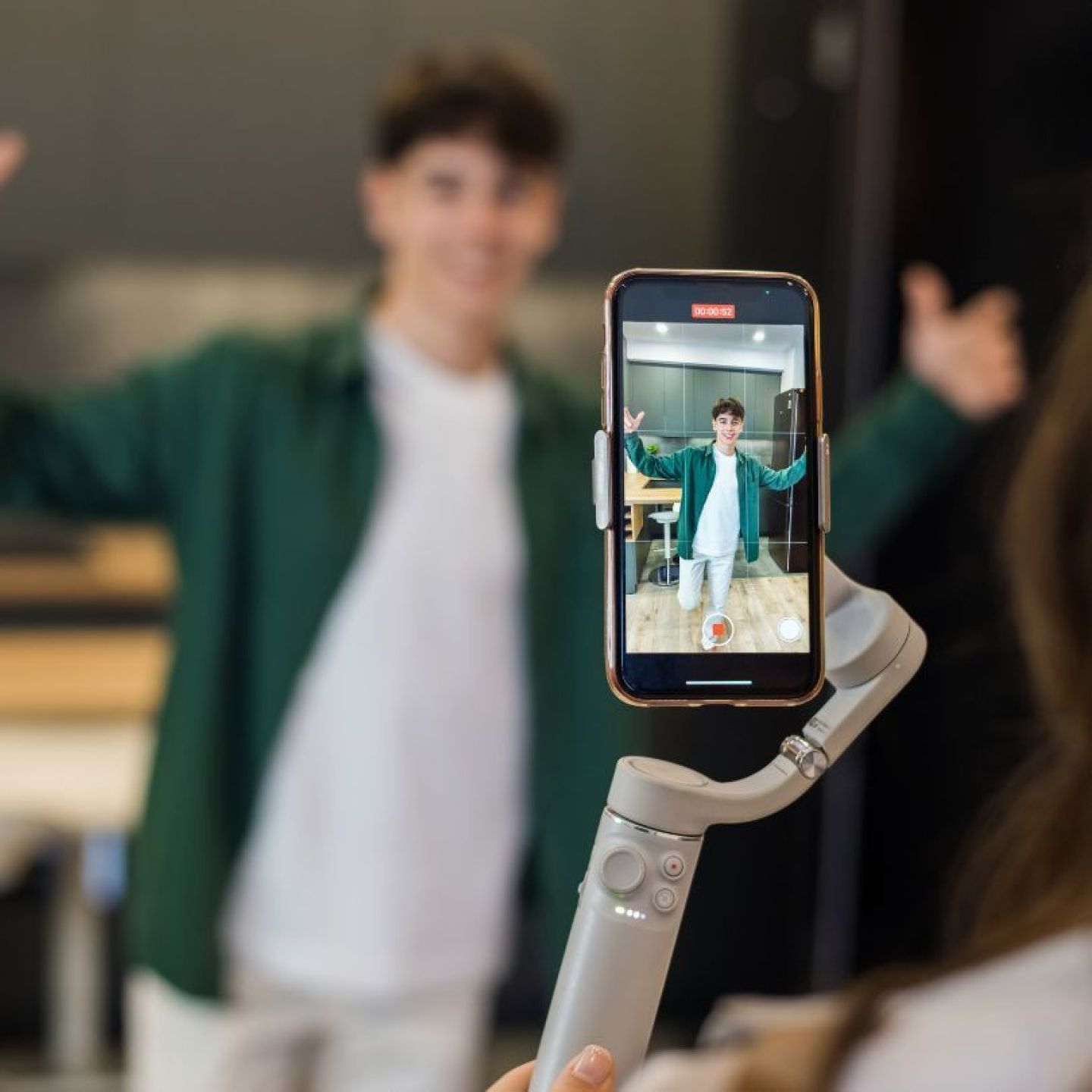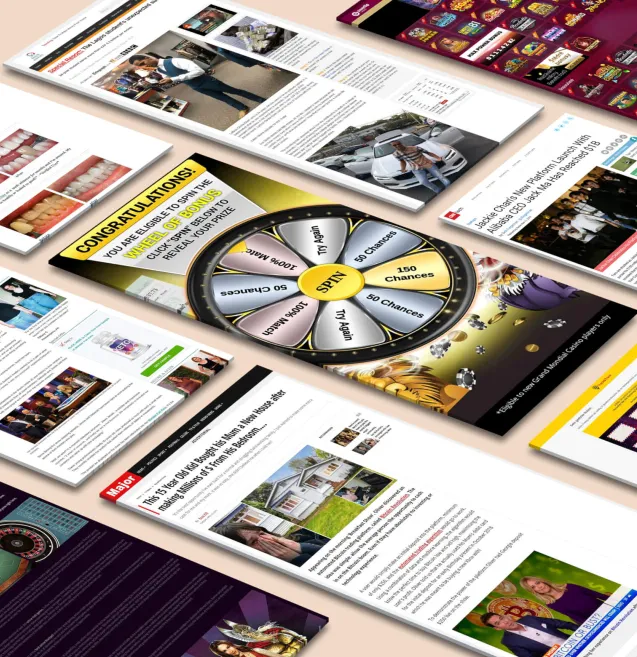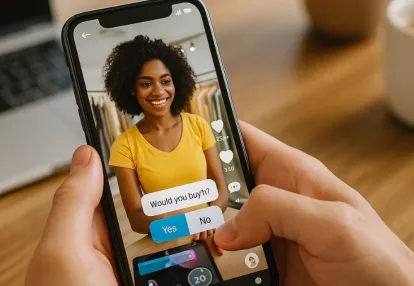
8 minJanuary 19, 2025

Our spy tools monitor millions of TikTok ads from over 55+ countries. Biggest TikTok Ad Library in E-commerce and Mobile Apps!
Try It FREEThe fashion industry has seen a significant change with the rise of influencer marketing. This powerful strategy connects brands with consumers through trusted social media personalities who shape trends, drive purchasing decisions, and redefine industry standards.
Influencer marketing in fashion represents a shift from traditional advertising to authentic, relationship-based promotion. Fashion brands now partner with social media creators who have built engaged communities around their personal style, lifestyle, and fashion expertise. These collaborations range from product launches and exclusive collections to behind-the-scenes content and styling tutorials.
The impact of this marketing evolution is striking:
This revolutionary approach has disrupted conventional fashion marketing by:
In this article, we will explore 10 unexpected ways influencer marketing is reshaping the fashion industry, including changing power dynamics and establishing new business models that prioritize authenticity and consumer engagement.
The fashion industry's marketing landscape has undergone a dramatic transformation since 2015. What started as a $500 million industry has exploded into a $16.4 billion powerhouse in 2022, with projections reaching $84.89 billion by 2028 - marking a staggering 3,180% growth rate.
This meteoric rise stems from a significant shift in consumer behavior:
The numbers paint a compelling picture of social media's impact:
Major publications have legitimized influencer marketing through dedicated coverage and partnerships. Vogue, Elle, and Harper's Bazaar now feature regular columns about influencers, contributing to:
This shift has created a new hierarchy in fashion marketing:
The data shows fashion brands investing in influencer marketing achieve:
Fashion influencers have become powerful catalysts in shaping consumer purchasing decisions. Research shows that 72% of Gen Z and millennial consumers make buying decisions based on influencer recommendations, creating a direct link between social media content and retail sales.
Influencers impact consumer behavior through various psychological mechanisms:
Fast-fashion giants like Zara have mastered the art of leveraging influencer impact. When an influencer posts a trending outfit:
This rapid response system has transformed the traditional fashion calendar, creating micro-trends that emerge and evolve weekly rather than seasonally.
Different age groups interact uniquely with fashion influencers:
Data reveals that younger audiences (18-24) engage 3x more frequently with fashion content, spending an average of 2.5 hours daily consuming influencer-generated content. Their purchasing decisions are 65% more likely to be influenced by social media compared to traditional advertising.
The behavioral patterns show a clear shift: consumers now trust peer recommendations over brand messaging. This trust translates into tangible results - influencer-promoted products see a 27% higher conversion rate compared to traditional marketing channels.
Social media platforms play a crucial role in the world of fashion influencers. Each platform has its own strengths that help brands get more visibility and connect with their audience.
Instagram: Leading the Way
Instagram is at the forefront of this movement, boasting an impressive 45% engagement rate for fashion-related content. This far surpasses traditional blogs, which only see an average engagement rate of 15%.
Here are some key statistics highlighting Instagram's impact:
YouTube: Powering Long-Form Content
YouTube also plays a vital role in influencer marketing, particularly when it comes to long-form content. Here are some key insights:
TikTok: The Rise of Short-Form Video
TikTok has emerged as the fastest-growing platform for fashion content, with its unique format appealing to younger audiences. Here are some key takeaways:
Understanding Platform Effectiveness
It's essential to recognize that each social media platform has its own strengths and weaknesses when it comes to influencer marketing. Here's a breakdown:
| Platform | Strengths | Weaknesses |
|---|---|---|
| Visual storytelling, immediate purchase conversion | Limited reach among older demographics | |
| YouTube | In-depth product reviews, brand storytelling | Longer video format may not appeal to all viewers |
| TikTok | Viral potential, reaching Gen Z audience | Short attention span may hinder brand messaging |
By understanding these dynamics, brands can tailor their influencer marketing strategies accordingly.
Amplifying Brand Reach through Social Media
Social media amplifies brand reach through various mechanisms:
The Impact of Multi-Platform Strategies
Recent data indicates that fashion brands utilizing multi-platform strategies experience a staggering 3.5x increase in conversion rates compared to those relying solely on one platform.
This multiplier effect highlights the importance of diversifying your marketing efforts across various social media channels. Traditional marketing methods often struggle to achieve similar results due to limitations in targeting capabilities and measurement accuracy.
In conclusion, social media platforms play an integral role in influencer marketing by providing brands with opportunities for greater visibility and engagement. Understanding the strengths of each platform can help businesses develop effective strategies that resonate with their target audience while driving conversions.
The relationship between fashion brands and influencers is a delicate balance of creative control, market influence, and mutual benefit. This dynamic has evolved from simple product placement to strategic partnerships that shape industry trends.
The collaboration between Off-White and its influencer-turned-designer Virgil Abloh exemplifies the shifting power dynamics in fashion. Abloh's social media presence and cultural impact transformed Off-White from a startup into a luxury powerhouse, generating:
Modern fashion success relies on a careful balance between product quality and social buzz. Recent high-profile collaborations demonstrate this dynamic:
Brand perception shifts significantly through strategic celebrity partnerships:
The fashion industry witnesses a redistribution of influence:
This evolving dynamic creates new opportunities for brands to connect with audiences through trusted voices while maintaining their core identity. Successful partnerships emerge when brands and influencers align their values, creative vision, and commercial goals.
When it comes to influencer marketing, brands face an important decision: should they work with micro-influencers (those with 10,000 to 100,000 followers) or macro-influencers (those with over 100,000 followers)? Each type of influencer has its own advantages and challenges when it comes to fashion marketing strategies.
Micro-influencers have a smaller following compared to macro-influencers, but they often have Higher engagement rates and more authentic connections with their audience. Here are some key benefits of working with micro-influencers:
On the other hand, macro-influencers can offer brands a wider reach and greater visibility. Here are some advantages of collaborating with macro-influencers:
However, it's important to note that working with macro-influencers also comes with its own set of challenges:
Recent data shows micro-influencers driving 60% higher campaign engagement rates at 1/10th the cost of macro-influencers. Brands like Glossier have built their empire through strategic micro-influencer partnerships, achieving a 600% growth rate in their first two years.
When deciding between micro and macro influencers, brands should consider the following risk factors:
Micro-Influencers
Macro-Influencers
The selection process demands careful consideration of brand objectives. Luxury fashion brands like Chanel typically align with macro-influencers to maintain exclusivity, while emerging brands like Fashion Nova leverage networks of micro-influencers to build authentic community connections.
Data from recent campaigns reveals micro-influencers generate 20% higher conversion rates in niche fashion segments. This effectiveness stems from their ability to create genuine connections with specific audience demographics, fostering trust through relatable content and consistent engagement.
The fashion industry is facing increasing challenges as consumers become more skeptical of paid promotions and sponsored content. Recent studies show that 47% of consumers are tired of seeing the same influencer content repeatedly, while 67% doubt the authenticity of product endorsements.
Several controversies have contributed to the erosion of trust in influencer marketing:
The use of "#ad" and "#sponsored" tags has created a paradox - while transparency increases, consumer skepticism also grows. A recent survey reveals:
Successful brands are implementing various strategies to maintain credibility:
Brands like Everlane are leading by example, adopting a "radical transparency" approach in their influencer partnerships. Their campaigns highlight production costs, factory conditions, and environmental impact, establishing genuine connections with conscious consumers.
The emergence of "de-influencing" trends indicates a shift towards honest discussions about products, where influencers openly share both positive and negative experiences with fashion items, thereby fostering stronger trust with their audiences.
Fashion marketing has undergone a dramatic transformation from traditional print media to digital-first strategies. The 1990s saw supermodels gracing magazine covers and billboards, while the 2000s marked the rise of celebrity endorsements. Today's landscape positions social media influencers as the primary drivers of fashion trends and consumer behavior.
The traditional Four Ps of Marketing have adapted to accommodate influencer-driven strategies:
Luxury brands like Gucci have embraced this evolution by allocating 70% of their marketing budget to digital channels. Fast-fashion retailers such as H&M leverage micro-influencers for targeted market penetration, resulting in a 35% increase in engagement rates.
The integration of artificial intelligence and data analytics has enabled brands to measure influencer impact precisely. These tools track metrics beyond simple engagement, analyzing sentiment, conversion rates, and brand lift across multiple platforms.
This shift has created new roles within fashion marketing teams:
The fashion industry's most successful influencer campaigns demonstrate the remarkable potential of strategic partnerships. Let's analyze three groundbreaking case studies that redefined marketing success:
Generated $1 billion in revenue through strategic influencer collaborations
Created artificial scarcity through limited drops
Built anticipation through exclusive previews to Scott's 45M+ followers
Leveraged cross-platform promotion on Instagram, Twitter, and TikTok
Grew from $15,000 to $220 million in revenue in just three years
Partnered with 7,500+ micro-influencers across multiple markets
Utilized personalized discount codes for tracking ROI
Maintained consistent brand aesthetic across all influencer content
Achieved 70% of sales through influencer marketing
Created dedicated influencer trips generating millions of impressions
Developed long-term relationships with key fashion creators
Built a network of 3,500 active influencers worldwide
These case studies reveal that successful influencer marketing requires a delicate balance of creative freedom, strategic planning, and authentic partnerships. Brands that master this balance can achieve remarkable growth and establish lasting connections with their target audiences.
The fashion industry's rapid digital transformation brings unique challenges for brands navigating influencer partnerships. Let's explore these obstacles and practical solutions to maintain effective influencer marketing strategies.
The fashion influencer space faces intense competition across platforms. Brands can stand out through:
These strategies help brands maintain competitive advantage while building meaningful connections with their target audience through influencer partnerships.
The fashion industry's influencer landscape is set for significant change due to new technologies and evolving consumer expectations. With virtual reality experiences, followers can now "try on" products recommended by their favorite influencers, creating immersive shopping experiences that blend online and offline worlds.
Here are some ways emerging technologies are expected to impact influencer marketing:
For actionable insights and tools to navigate these advancements, explore Anstrex InStream, which offers resources to optimize influencer-driven campaigns and social commerce strategies.
To stay relevant in this changing landscape, brands must embrace these innovations:
The brands that succeed will be those who understand that influencer marketing is not just a passing trend but an integral part of their digital transformation strategy. They will proactively adapt to new technologies while also nurturing genuine human connectionsЁЊsomething that today's consumers highly value.
Receive top converting landing pages in your inbox every week from us.
News
TikTok has transformed from a dance-focused social platform into a marketing powerhouse, reaching over 1.6 billion active users worldwide. This explosive growth has sparked a revolution in how brands connect with their audiences through influencer marketing.
Elena Morales
7 minJul 23, 2025
Quick Read
TikTok has changed the game for digital marketing in 2025. It has evolved from being just a popular social media platform to becoming a powerful tool for genuine brand storytelling. With more than 1.5 billion active users, brands now see TikTok as a must-have channel to connect with their audience through authentic content created by influencers.
Priya Kapoor
7 minJul 13, 2025
Announcement
TikTok has transformed from a dance-focused social platform into a marketing powerhouse that's reshaping how brands connect with audiences. With over 1 billion monthly active users, TikTok's influence on digital marketing can't be ignored.
David Kim
7 minJul 4, 2025




